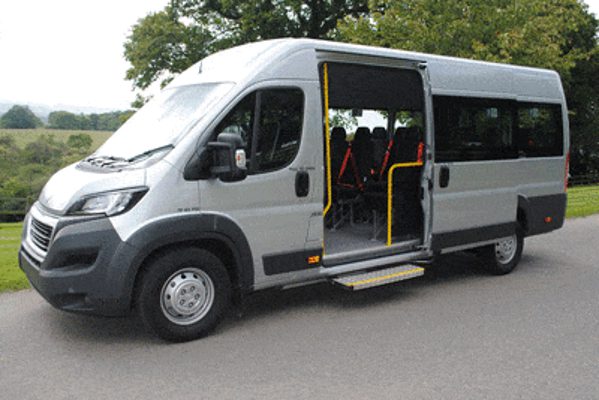Minibuses have become an increasingly popular solution for addressing the transportation needs of schools across the UK. With growing concern for the environment, road safety, and access to education, many educational institutions are exploring the benefits of implementing an efficient and eco-friendly school transport system.
This article aims to provide a comprehensive guide for schools looking to establish or improve their transportation offerings using minibuses. Covering aspects such as selecting the right vehicles, adhering to safety regulations, and engaging the school community, we aim to equip schools with the knowledge and tools necessary for creating a successful minibus programme. By embracing this alternative form of transportation, schools can not only reduce their carbon footprint but also help to create a more inclusive and accessible learning environment for all students.
Choosing the Right Minibus: Key Features and Considerations
Selecting the ideal minibus for your school’s transportation needs requires careful consideration of several key factors. Here are some essential aspects to take into account when choosing the right minibus:
Passenger capacity: Determine the number of students you need to accommodate, considering both current and future enrolment figures. Minibuses are available in various sizes, typically ranging from 9 to 17 seats, to suit your school’s requirements.
Accessibility: Ensure that the minibus caters to the needs of all students, including those with disabilities. Look for features such as wheelchair access, low steps, and handrails to provide a safe and comfortable experience for everyone.
Fuel efficiency and emissions: Opt for a minibus with low emissions and good fuel economy to minimise environmental impact and running costs. Consider electric or hybrid options for an even greener choice.
Safety features: Verify that the minibus complies with UK safety regulations and is equipped with essential safety features such as seatbelts, antilock brakes, and electronic stability control.
Comfort and amenities: Evaluate additional features that can enhance the students’ travel experience, such as air conditioning, heating, and storage space for school bags and equipment.
By carefully weighing these factors, you can make an informed decision on the best minibus to serve your school’s transportation needs effectively and responsibly.
Acquiring Minibuses: Purchase, Lease, or Rent?
Acquiring minibuses for schools is a significant decision, and it’s crucial to weigh the options of purchasing, minibus leasing, or renting to determine the most suitable choice for your institution. When purchasing a minibus outright, you gain full ownership and control, allowing for complete customisation to meet your school’s specific needs. However, the upfront costs can be substantial, and depreciation and maintenance costs should be considered.
Minibus leasing presents a more flexible alternative, as it typically involves a long-term contract with lower initial expenses. You’ll have access to newer models with advanced safety features and lower emissions. Additionally, maintenance and servicing are often included in the lease agreement,
providing peace of mind and predictability in costs.
Renting minibuses can be a viable option for schools with sporadic or short-term transportation needs, offering the advantage of reduced commitment and minimal ongoing costs. Ultimately, understanding your school’s unique requirements and financial situation will guide you in selecting the most appropriate acquisition method for your minibus fleet.
Developing Efficient and Accessible Routes and Schedules
Developing efficient and accessible routes and schedules is vital to the success of a school minibus transport system. A well-planned network ensures that students arrive at school on time and reduces the potential for congestion around the school premises. To create an effective transport plan, consider the following factors:
Begin by identifying the areas where students reside, taking into account factors such as distance, population density, and road infrastructure. Use this information to establish strategic pick-up and drop-off points that minimise travel time and ensure a smooth journey for all students.
Next, create a timetable that aligns with school hours and extracurricular activities. Consider varying arrival and departure times to reduce traffic congestion and maintain punctuality. It’s essential to provide clear communication to parents and students about the schedule and any changes that may occur.
Incorporate accessibility considerations into your route planning, ensuring that students with disabilities or mobility impairments can easily access the minibus service. Finally, regularly review and adjust your routes and schedules based on feedback from students, parents, and drivers, to continually improve your school’s transportation system.
Ensuring Safety and Compliance: Regulations and Best Practices
Ensuring the safety of students and compliance with regulations is paramount when implementing a school minibus transportation system. In the UK, schools must adhere to specific legal requirements and best practices to maintain a safe and secure environment for their students.
First, ensure that the minibus meets the UK’s stringent safety standards, including seatbelts, emergency exits, and other essential safety features. Regular maintenance checks and servicing should be conducted to keep the vehicle in optimal condition, and maintenance records must be meticulously kept.
Driver training and certification are crucial aspects of safety compliance. School minibus drivers should possess the appropriate driving licence category, complete a MiDAS (Minibus Driver Awareness Scheme) training course, and undergo a Disclosure and Barring Service (DBS) check.
Additionally, schools must follow guidelines on driver working hours, rest periods, and monitoring driver fatigue to prevent accidents caused by tiredness. Lastly, adopting a robust safety culture within the school community, including regular communication and training for staff, students, and parents, will ensure that everyone understands their role in maintaining a secure and reliable transport system.
Engaging Parents, Teachers, and the Community in the Transport Initiative
Engaging parents, teachers, and the wider community in the transport initiative is crucial for the success of a school minibus system. Active involvement of all stakeholders ensures a supportive environment, addresses concerns, and fosters a shared sense of responsibility for the well-being of
students.
Begin by clearly communicating the goals and benefits of the minibus transport system to parents, teachers, and the community. Highlight the advantages, such as improved accessibility, reduced traffic congestion, and environmental impact. Transparency in funding and budgeting can also help build trust and support.
Encourage feedback and suggestions from stakeholders through regular meetings, surveys, or online platforms. This collaborative approach will help identify areas of improvement and build a sense of ownership among all involved.
Incorporate educational opportunities related to transport safety and sustainability within the school curriculum. This will not only engage students but also reinforce the importance of responsible transportation choices.
Lastly, consider partnering with local businesses, organisations, and public transport authorities to enhance the transport initiative’s reach and impact. These collaborations can provide valuable resources, expertise, and opportunities for further community engagement.
Final Thoughts
In conclusion, implementing a successful school minibus transport system requires careful planning, collaboration, and a commitment to safety, accessibility, and efficiency. By choosing the right minibus, ensuring compliance with regulations, and engaging all stakeholders, schools can create a transportation system that benefits both students and the wider community.
A well-executed minibus programme can improve attendance, reduce traffic congestion, and promote a more sustainable approach to school transportation. Furthermore, the involvement of parents, teachers, and the community fosters a sense of shared responsibility and pride in the initiative. As we move towards a greener and more inclusive future, minibuses for schools offer an effective solution to the challenges of student transportation, while enhancing the overall educational experience for every student in the UK.
Help keep news FREE for our readers
Supporting your local community newspaper/online news outlet is crucial now more than ever. If you believe in independent journalism, then consider making a valuable contribution by making a one-time or monthly donation. We operate in rural areas where providing unbiased news can be challenging. Read More About Supporting The West Wales Chronicle

























